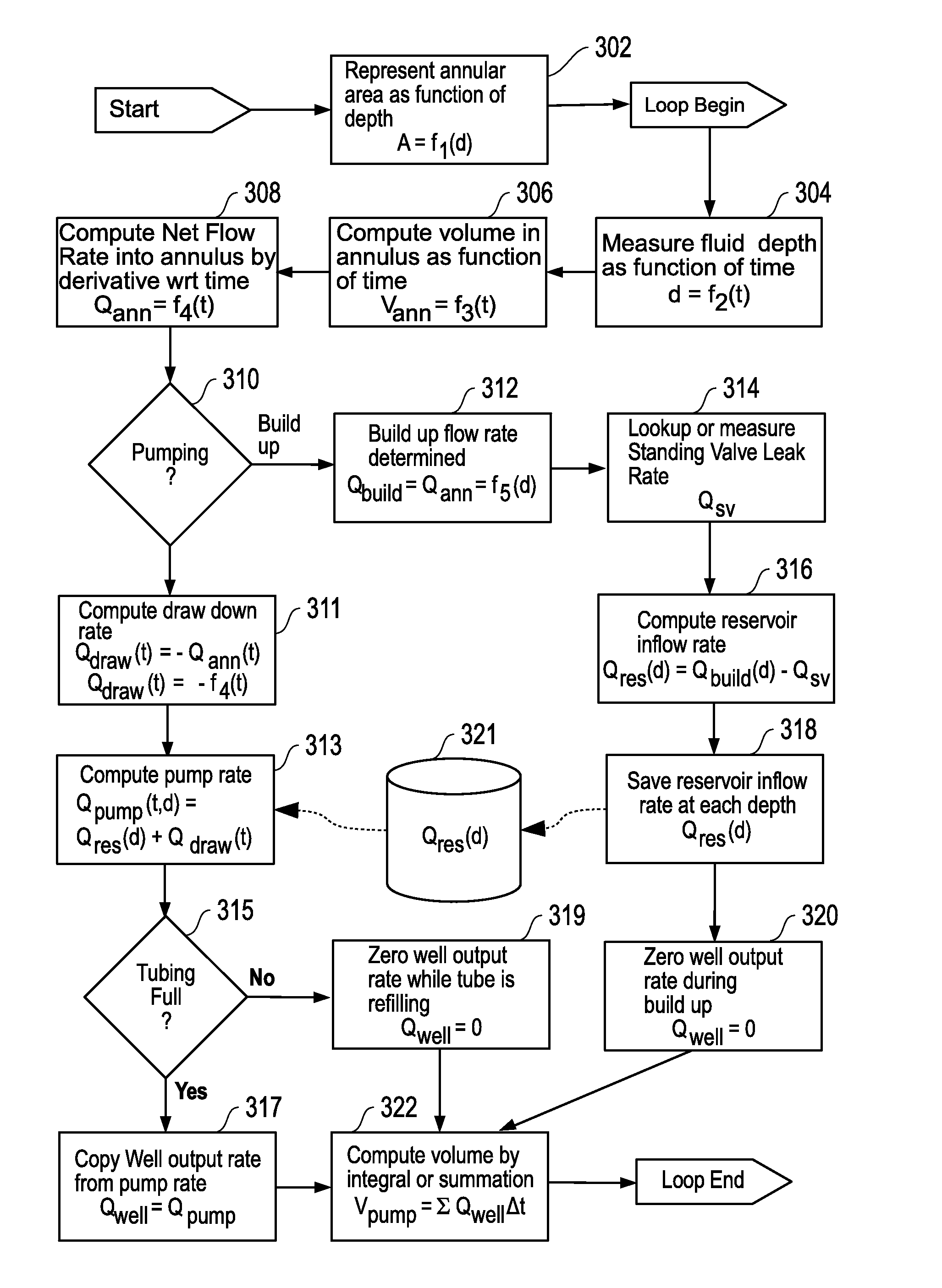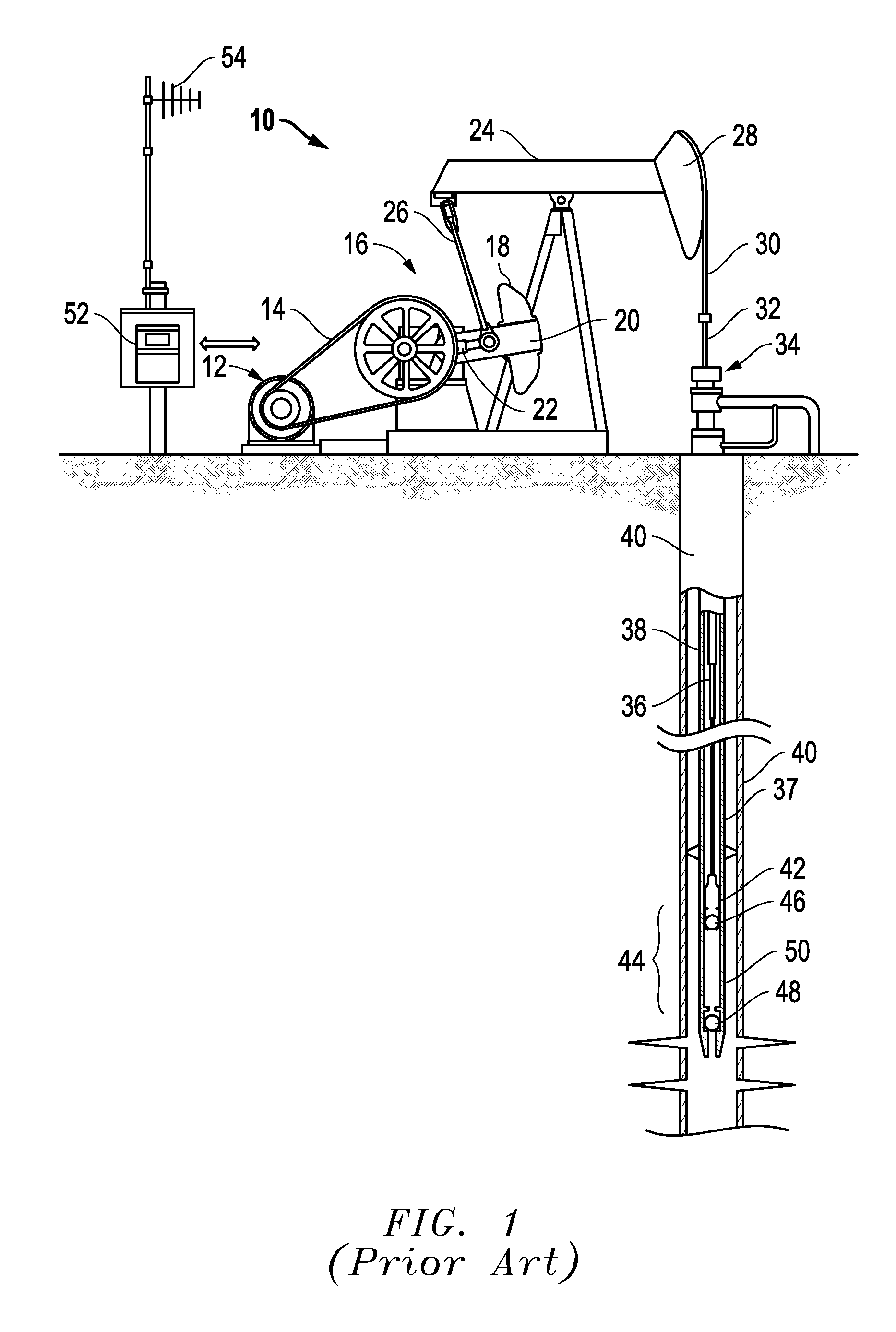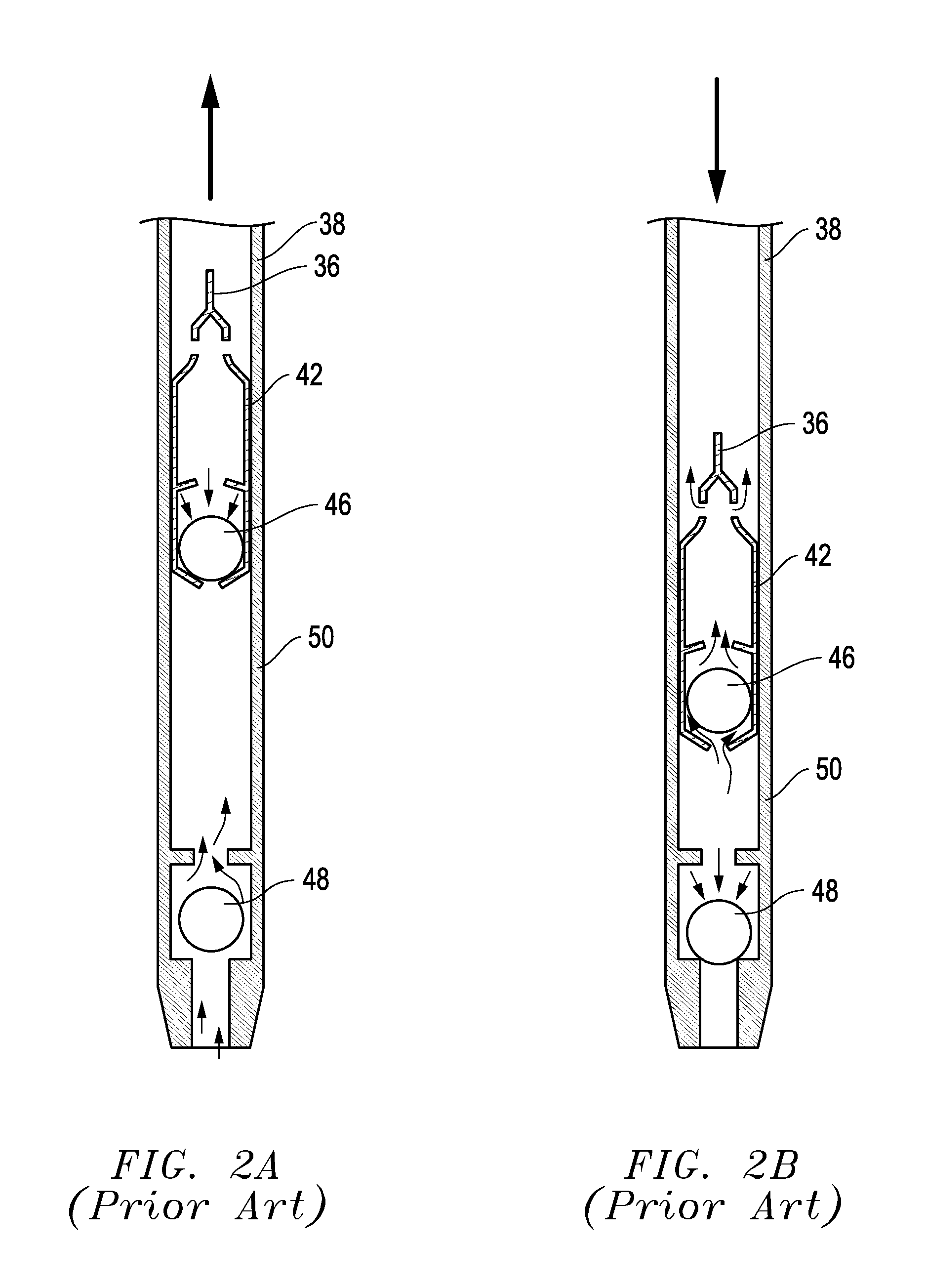System and Method for Measuring Well Flow Rate
a well flow rate and flow rate technology, applied in the field of system and method for measuring well flow rate, can solve the problems of measured fluid build-up, limited known method of making well flow rate measurements, and leakage of traveling valves and standing valves, etc., and achieve the effect of enhancing accuracy
- Summary
- Abstract
- Description
- Claims
- Application Information
AI Technical Summary
Benefits of technology
Problems solved by technology
Method used
Image
Examples
Embodiment Construction
[0023]The following description is presented to enable any person skilled in the art to make and use the invention, and is provided in the context of a particular application and its requirements. Various modifications to the disclosed embodiments will be readily apparent to those skilled in the art, and the general principles defined herein may be applied to other embodiments and applications without departing from the spirit and scope of the present invention. Thus, the present invention is not intended to be limited to the embodiments shown, but is to be accorded the widest scope consistent with the principles and features disclosed herein.
[0024]The present invention uses a typical rod pumping system, as shown as FIG. 1, generally indicated by reference number 10, including a prime mover 12, typically an electric motor. The power output from the prime mover 12 is transmitted by a belt 14 to a gear box unit 16. The gear box unit 16 reduces the rotational speed generated by prime m...
PUM
 Login to View More
Login to View More Abstract
Description
Claims
Application Information
 Login to View More
Login to View More - R&D
- Intellectual Property
- Life Sciences
- Materials
- Tech Scout
- Unparalleled Data Quality
- Higher Quality Content
- 60% Fewer Hallucinations
Browse by: Latest US Patents, China's latest patents, Technical Efficacy Thesaurus, Application Domain, Technology Topic, Popular Technical Reports.
© 2025 PatSnap. All rights reserved.Legal|Privacy policy|Modern Slavery Act Transparency Statement|Sitemap|About US| Contact US: help@patsnap.com



